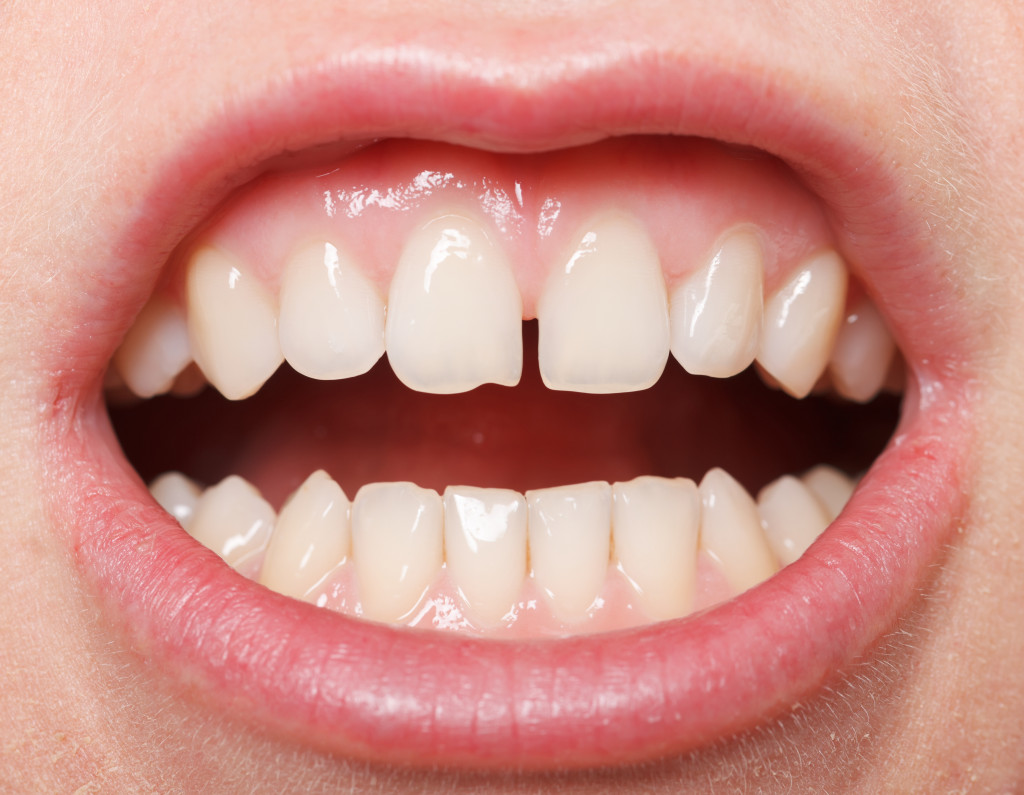Gapped teeth, or diastema, aren’t much a cause of severe medical concern, but they are if they bother you or cause food to get stuck between the teeth most often. For others, the spaces between their front teeth express their individuality, but some are also insecure about them, even smiling less often because of those spaces.
If you feel the latter, you might want to consider the different methods of treating those spaces. Braces aren’t the only solution. Depending on many factors, your trusted dentist may recommend many other ways to close the gaps between your teeth.
Causes of gapped teeth differ, and so, the solutions also vary. The gaps between your teeth or diastema may be due to improper swallowing reflex, issues in the jaw bone, periodontal gum disease, undersized or missing teeth, or having a labial frenum of abnormal size.
Untreated gap teeth can remain throughout your lifetime. But if they’re caused by tongue thrust or periodontal disease, the gap can turn larger in time. Here are some methods to consider when you have gapped teeth:
1. Dental Bonding
This is the best option for those with small gaps between their teeth. But since this is a cosmetic procedure, it may not be best for those with more severe issues, such as having crooked, crowded, or misaligned teeth.
If your gapped teeth are a simple case, your dentist would most likely recommend cosmetic bonding to make it look longer, enhancing the damaged tooth’s appearance. Some dentists even recommend dental bonding for patients with receding gums.
The process involves covering the chipped, discolored, decayed, or fractured teeth with a composite resin that matches the color of the nearby teeth. Before putting the conditional liquid, the teeth are first gently scratched and etched.
Every tooth may just take thirty minutes, especially for the less complicated cases, and since dentists can easily make the materials, they can be done in one sitting. Take note that composite bonding can last for up to five years on average.
Like any other procedure, your dentist will prescribe pain relief medications to alleviate the sensitivity on or before the procedure. If the procedure is on the front incisors, make sure to avoid opening food packets through your front teeth.

2. Porcelain Veneers
Another option to treat the gaps of your front teeth is porcelain veneers. This cosmetic approach is more expensive than dental bonding and irreversible, so make sure that it’s your final choice before you get into it.
Porcelain veneers are manufactured in a lab using the shells of porcelain and in a way that they match the color and shape of your teeth. Before placing the veneers, your dentist will have to create a surface space for them to be attached to. This is done by removing enamel layers in the front teeth.
After a thin layer of enamel is shaved and your veneers are made, you will need to get back to your dentist to cement the veneers into their place finally. They can last for up to fifteen years, look like natural teeth, and do not stain.
Take note that since they’re there for good, there’s no turning back as a replacement for enamel. Ask your dentist first if this is the best method for you.
3. Orthodontic Treatment
When the gaps in your teeth are wider and more serious, you can turn to orthodontic treatments. This is because when one gap is closed, it can result in another gap, especially on either side of the treated teeth.
Most likely, your dentist would recommend metal braces to correct the position or arch of your teeth. But braces aren’t the only option. You can also have invisible or hidden braces and clear or removable aligners.
Invisible aligners are usually the less painful and most effortless approach for treating gaps among all the options. These aligners adjust the size and shape of your dental arches to correct the alignment of the teeth, thus closing the gaps.
If you’re looking for more modern orthodontic options, you can choose from these methods—lingual braces, Inman aligner, and conventional labial exterior fixed braces.
However, orthodontic treatments have a few disadvantages. They can take longer than porcelain veneers or dental bonding, and the bonding material can weaken, discolor, and break away over the years.
How to Choose the Best Treatment for Your Gapped Teeth
Having done your part of the research, take second opinions from your dentist to determine which option is perfect for you. For small gaps, you can opt for cosmetic procedures. For larger gaps, your dentist will most likely recommend any of the orthodontic treatments.

